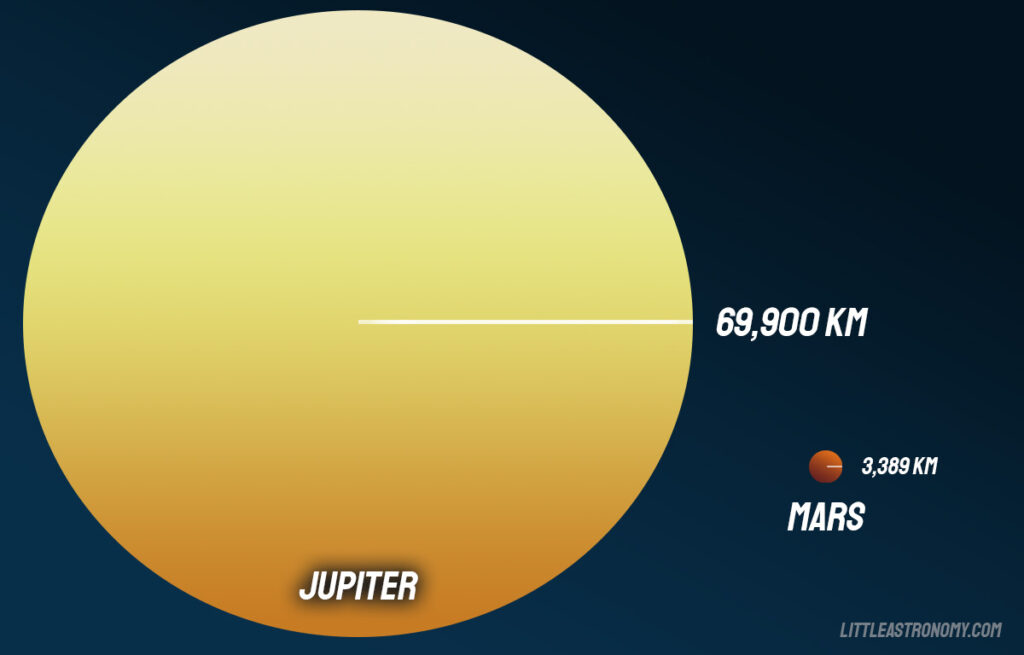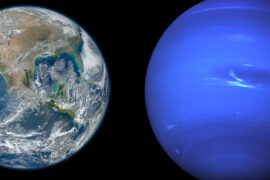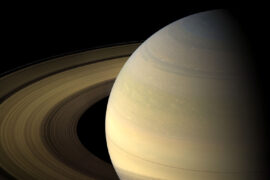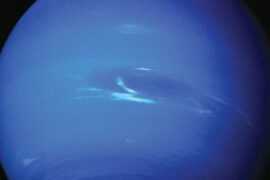Mars and Jupiter are like neighbors in a rural area. They might live technically next to each other, but they are half a mile away, there’s a highway between their properties, and they barely know each other.
Unlike other neighbors in the Solar system that share things in common like Earth and Venus, or Saturn and Neptune, Mars and Jupiter are probably the most different planets that are “next” to each other. So much that the space between them is considered the line that divides the two main groups of planets in the Solar system, the inner planets (Mercury, Venus, Earth, and Mars), and the outer planets (Jupiter, Saturn, Uranus, and Neptune). These groups are also sometimes called “terrestrial planets” and “Jovian planets”.
With all of these differences, could they have anything in common? well, as a matter of fact, they do. In this article, we’ll compare Mars and Jupiter so we can learn more about their differences and similarities, and along the way, understand more about the Solar system.
Mars vs Jupiter comparison
| Mars | Jupiter | |
|---|---|---|
| Position in the Solar system | 4 | 5 |
| Distance from the Sun (avg) | 226 million km | 741 million km |
| Radius | 3,389 km | 69,900 km |
| Mass | 6.4171×1023 kg | 1.9 × 1027 kg |
| Rotation period (1 day) | 24 hours 37 minutes (1.025 days) | 10 hours |
| Rotation speed | 0.24 km/s | 45,000 km/h |
| Orbit period (1 year) | 687 days | 11.85 years |
| Orbital speed | 24.07 km/s | 13.07 km/s |
| Average temperature | −62°C | −110 °C |
| Surface pressure | 0.636 kPa | 200 – 600 kPa |
| Surface gravity | 3.72 m/s2 | 24.79 m/s2 |
| Density | 3.93 g/cm3 | 1.33 g/cm3 |
| Escape Velocity | 5.027 km/s | 59.5 km/s |
| Albedo | 0.170 | 0.5 |
| Satellites (Moons) | 2 | 95 |
| Core | rock | rock, metal, ice |
| Atmosphere | 95% CO2, 2.6% N2, 1.9% Ar, 0.16% O2, 0.06% CO | 89% H, 10% He, 0.3% CH4, traces of others |
Mars vs Jupiter size comparison
The most obvious difference when you compare Mars and Jupiter is their size. Jupiter is the largest planet in the Solar system with a staggering radius of 139,800 kilometers (86,868 miles). Mars, on the other hand, is the second smallest planet, with a diameter of just 6,778 kilometers (4,212 miles). For comparison, Earth’ is almost twice ‘s diameter is almost twice that.
All this means is that Jupiter is almost 21 times larger than Mars if you put them side to side.
In terms of volume, it means that you could fit more than 2,600 Mars-sized planets in just one Jupiter.
The image below shows this huge size difference in scale.

Mars and Jupiter similarities
- Both planets are in the Solar system and orbit the Sun
- Both planets have approximately the same age and formed at the same time 4.5 billion years ago
- Both planets are spherical despite their different composition
- Both planets have cleared their orbits of every other large object
- Mars and Jupiter rotate in the same direction (counter-clockwise)
- both planets have atmospheres
- Mars and Jupiter are both next to the asteroid belt
- Both planets have a magnetic field although Mars’ is very weak
- Mars and Jupiter both have natural satellites (moons). Mars has two and Jupiter has 95 moons
- Both planets have wind
- Both Mars and Jupiter are very cold
- Both planets are visible to the naked eye and were known by ancient civilizations.
- Mars and Jupiter are named after Roman deities. Mars after the god of war, and Jupiter after the god of thunder.
Mars and Jupiter differences
- The most obvious difference between Mars and Jupiter is their size. Jupiter is almost 21 times larger than Mars side by side. That means you could fit 2,600 Mars-sized planets into Jupiter.
- Mars is a terrestrial, rocky planet with a solid surface. Jupiter is mostly made out of gas and doesn’t even have a surface.
- A person could stand and walk on Mars (using a spacesuit). You can’t stand on Jupiter as there is no surface. If you were to “fall” into Jupiter, you would just sink into its core (assuming you also had a spacesuit that could protect you which doesn’t exist yet)
- Jupiter rotates very fast. Despite its large size, it can complete a rotation (a day) in just 10 hours. One day on Mars is almost the same as on Earth. Martian days are about 24 hours and 40 minutes, but Mars is much smaller than Earth and has a slower rotation.
- Jupiter travels through space much slower than Mars. It takes Jupiter almost 12 years to complete a single orbit (one year). Mars completes one in 687 Earth days.
- Despite both planets being cold, Jupiter is much colder than Mars on average.
- The cores of both planets are quite different. We don’t even know if Jupiter has a solid core.
- You would need a rocket 10 times more powerful to escape Jupiter’s gravity than Mars’.
- Jupiter has a lot more natural satellites (moons) than Mars. Mars only has two, while Jupiter has 95 discovered moons. This is because Jupiter is so big that it tends to capture asteroids and comets and keeps them as satellites.
- The composition of their atmospheres is very different. The Martian atmosphere is mostly made up of carbon dioxide and nitrogen. Jupiter’s atmosphere is made up of hydrogen and helium.
- Jupiter has rings like Saturn’s, but they are much smaller and barely visible. Mars doesn’t have rings.
- Jupiter is 3 times farther away from the Sun than Mars.
- Mars is on average 1.6 times closer to Earth than Jupiter.
Summary
- Mars and Jupiter are two very different planets despite being neighbors
- The differences between Mars and Jupiter include their size, planet type, composition, and speed.
- Some similarities between Mars and Jupiter include their age, rotational direction, and location next to the asteroid belt







